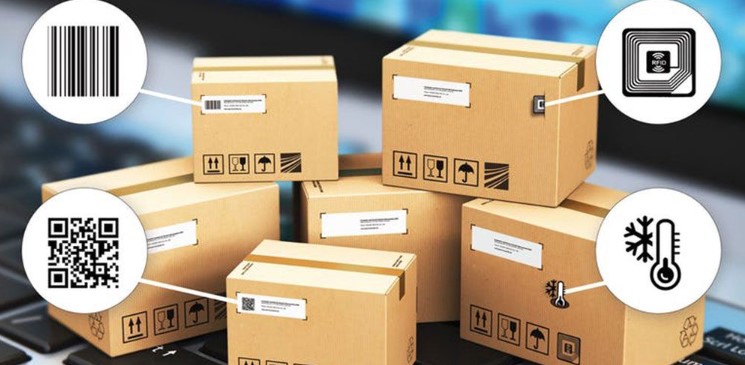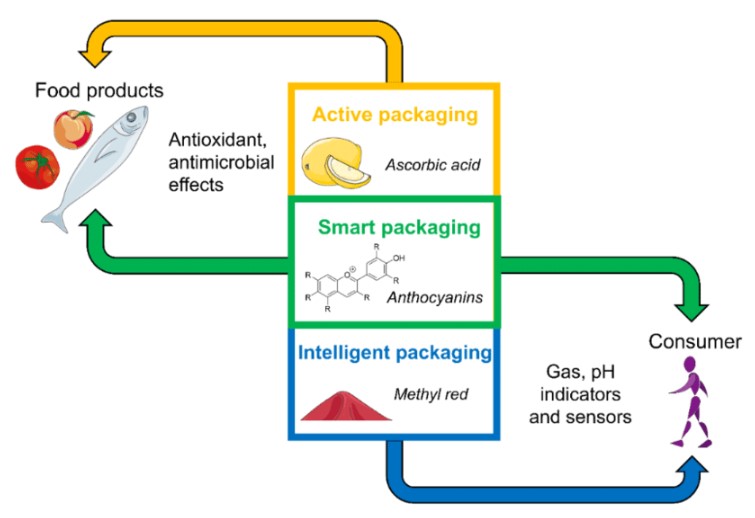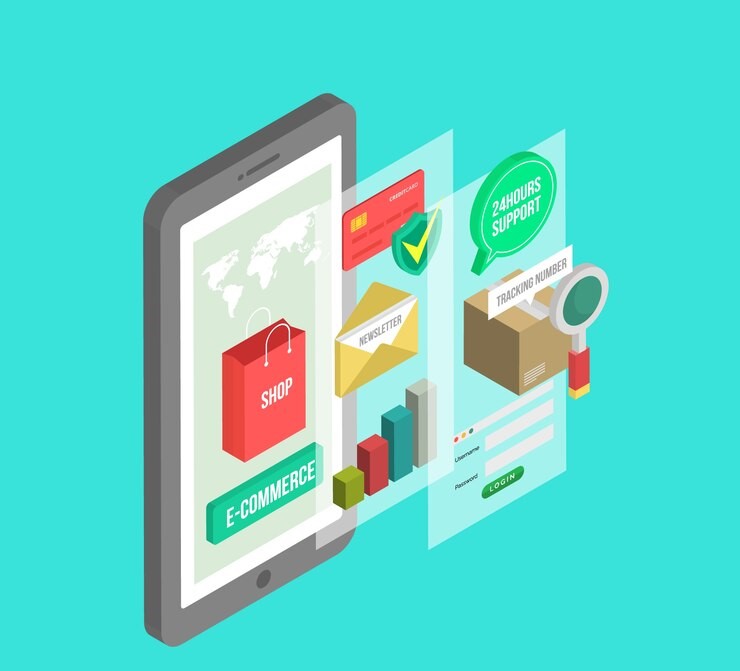Consumers are constantly looking for convenience and efficiency in their daily lives. This has led to the rise of smart packaging technology, which combines traditional packaging with innovative technology. Smart packaging creates a more interactive and engaging experience for consumers. But what exactly is this new packaging technology and what is the future of smart packaging in this fast-growing market?

The packaging industry is rapidly evolving to meet the demands of both consumers and businesses. Smart packaging, a revolutionary approach that incorporates advanced technology into traditional packaging methods, is leading this transformation. This blog will explore what smart packaging is, its benefits, applications and the future of this innovative technology.
What is Smart Packaging?
Smart packaging, also known as intelligent packaging, refers to packaging systems that use advanced materials and technologies to provide additional functions beyond the conventional purpose of packaging and protecting products. These features may include tracking content status, extending shelf life, increasing product security, and improving consumer engagement through interactive features.

Types of Smart Packaging
There are primarily two types of smart packaging: active packaging and intelligent packaging.

Active packaging
This type of packaging actively interacts with the product to extend its shelf life or improve its quality. Examples include moisture control packs, oxygen absorbers, and antimicrobial packaging. Active packaging interacts with the contents of the packaging and helps extend its shelf life. It is a popular choice for food and beverages, as these products are more sensitive to environmental conditions. An example of active packaging is fruit stockings with integrated ethylene absorbers. Some other common elements of active packaging include:
- Light filtering materials
- Oxygen absorbers
- Moisture-regulating inserts
- Antimicrobial coating
Intelligent Packaging
Intelligent packaging systems monitor the condition of the product and provide information about its condition. This can include temperature, freshness and spoilage indicators, as well as RFID tags and QR codes for tracking and authentication.
This type of smart packaging relies on smart sensors and indicators to provide product status updates. In other words, smart packaging communicates important information such as product temperature, storage time, and whether it has been tampered with during transport.

One another common type of smart packaging is labels with a time and temperature indicator. As the name suggests, these labels record the temperature of a food or pharmaceutical product over time to determine its quality upon delivery.
Advantages of Smart Packaging
Smart packaging offers a number of benefits for both consumers and businesses. These benefits include:
- Extended Shelf Life: Active packaging technology can help maintain product freshness and quality by controlling environmental factors such as moisture, oxygen and microbial growth.
- Improved Security: Smart packaging can enhance security by providing real-time information about product status. For example, temperature-sensitive indicators can show whether a product has been exposed to temperatures outside the safe range.
- Enhanced Consumer Experience: Smart packaging can engage consumers through interactive features such as QR codes that provide additional product information, usage instructions, or promotional content.
- Supply Chain Efficiency: RFID tags and other tracking technologies can improve supply chain visibility, enabling better inventory management and reducing the risk of counterfeiting.
Smart Packaging Application
Smart packaging is used in various industries to improve product quality, safety and consumer engagement. Some notable applications include:

Food and Beverage
Smart packaging in the food industry includes freshness indicators, temperature sensors and moisture absorbers to extend shelf life and ensure food safety.
Pharmaceuticals
In the pharmaceutical industry, smart packaging can monitor drug status, track shipments, and provide authentication to prevent counterfeit drugs.
Consumer Electronics
Smart packaging can protect electronic products from moisture and static electricity and provide tamper proof.
Retail
Retailers are using smart packaging to enhance the customer experience through augmented reality (AR) and other interactive features that provide additional product information and engagement.
The Role of Technology in Smart Packaging
Technological progress plays a key role in the development and implementation of smart packaging solutions. Some of the key technologies that support this innovation include:
- Internet of Things (IoT): IoT technology allows packaging to communicate with other devices and systems, enabling real-time monitoring and data collection.
- Sensors: Sensors built into the pack can detect and respond to environmental changes such as temperature, humidity and light exposure.
- RFID and NFC: Radio Frequency Identification (RFID) and Near Field Communication (NFC) technologies enable tracking and authentication, increasing supply chain transparency and product security.

- Blockchain: Blockchain technology can provide a secure and transparent way to track products in the supply chain, ensure authenticity and reduce the risk of counterfeiting.

Challenges and Considerations in Smart Packaging
Despite the numerous benefits, adopting smart packaging also comes with some challenges and considerations:

- Cost: Implementing smart packaging technologies can be costly, which can be a barrier for some businesses, especially small and medium-sized enterprises (SMEs).
- Regulatory Compliance: Different industries and regions have different regulations regarding packaging materials and technologies, which can complicate the implementation process.
- Consumer Privacy: With the use of tracking technologies, there are consumer privacy and data security concerns that need to be addressed.
What’s the Future of Smart Packaging?
The future of smart packaging looks promising, and continued advances in technology are expected to drive further innovation. Some new trends and potential future developments include:

- Sustainability: With growing concerns about the environment, we focus on developing smart packaging solutions that are not only functional but also sustainable. This includes the use of biodegradable materials and energy-efficient technologies.
- Personalization: With the rise of personalized products, smart packaging can provide customers with customized experiences, such as personalized messages or recommendations based on individual preferences.
- E-Commerce Integration: As e-commerce continues to grow, smart packaging can enhance the online shopping experience by providing real-time tracking, authentication, and interactive features.
Case studies in Smart Packaging
Several companies have successfully implemented smart packaging solutions that demonstrate the potential and benefits of this technology:

Freshness sensors in food packaging
A major food manufacturer has implemented smart packaging with freshness sensors that change color according to the freshness level of the product. This allowed consumers to easily identify product quality at the point of purchase.
RFID in Pharmaceuticals
A pharmaceutical company used RFID technology in its packaging to track and authenticate drugs throughout the supply chain. This has helped reduce the incidence of counterfeit drugs and ensured that patients receive genuine products.
Interactive Retail Packaging
A retail brand has integrated AR technology into its packaging, allowing consumers to scan the packaging with their smartphone to access product information, user reviews and promotional content. This improved the shopping experience and increased customer engagement.
Conclusion
Smart packaging is changing the way products are packaged, delivered, and experienced by consumers. By incorporating advanced technologies such as IoT, sensors, RFID, and blockchain, smart packaging provides a range of benefits, including extended shelf life, improved safety, better consumer engagement, and increased supply chain efficiency. While there are challenges to overcome, the future of smart packaging is bright, with continued innovation poised to further revolutionize the industry.
As businesses and consumers alike recognize the value of smart packaging, adoption will increase, leading to a more connected, efficient, and sustainable future for the packaging industry.
